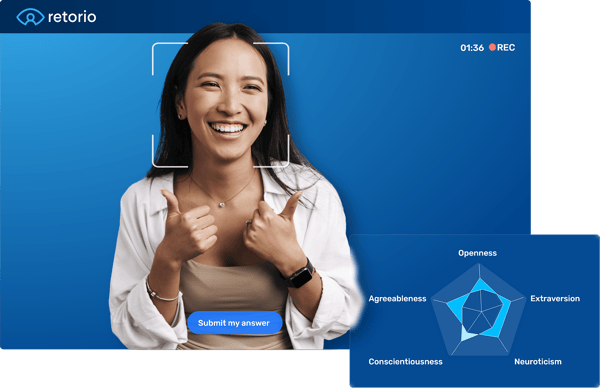B2C salespeople are all around you. From the travel agent that your parents booked their summer vacation with, to the guy who just sold you your last laptop. Sales representatives are the face of the company and the first point of interaction for consumers. The way sales reps interact with and serve their customers has a huge impact on the business.
Training your sales reps can help ensure that they have the knowledge and skills to communicate effectively with customers, understand their needs and pain points, and sell your products or services to meet those needs and exceed customer expectations. It can also help sales reps stay up-to-date on new products and industry developments, and give them the tools they need to overcome objections and close sales.
From increased sales to higher customer satisfaction, the bottom line is that training your sales reps means investing in your best asset - your talent.
So what should companies today do to make sure they're training their sales teams efficiently?
What’s in this post?
- What is B2C sales training?
- What are the elements of a successful sales training program?
- How can B2C businesses make sure their training methods are interactive?
What is B2C sales training?
B2C stands for "business-to-consumer" (as opposed to business-to-business or B2B). B2C businesses sell their products or services directly to individual consumers, rather than to other businesses. Therefore, B2C sales training is training that is specifically designed to teach sales representatives how to effectively sell products or services to individual consumers.
Examples of B2C business:
- Online stores. For example, Amazon, the multinational technology company focusing on e-commerce.
- Restaurants. For example, Mcdonald's. Consumers go directly to a Mcdonald's chain restaurant and buy food.
- Retail stores. For example, Walmart. Consumers walk into the store and directly purchase products from the shelves.
- Service businesses. For example, consumers go to hair salons and pay the salon to treat their hair.
- Entertainment businesses. For example, Netflix. Consumers pay for a monthly subscription directly from Netflix to stream movies.
What are the elements of a successful B2C sales training program?
-
Engaging and interactive training methods
Today training is no longer simply about writing up a curriculum and getting your sales reps to go through it. It's also not enough to fly in a sales trainer in once a year for a workshop that your employees will forget a week later. Passive learning styles such as lecturing or watching videos don't keep trainees engaged and motivated, which are two elements that are key to toa. successful training program.
So how do you keep trainees engaged and motivated during training?
Roleplaying can be an effective training tool for sales because it allows the trainee to practice and receive feedback in a simulated real-world scenario. It can also help them develop skills such as communication, negotiation, and problem-solving.
For example, one of Germany's largest automobile manufacturers uses Retorio's artificial intelligence training platform to upskill their B2C sales professionals. Their teams, spread across the globe, can access Retorio's AI Coaching platform to practice real-life scenarios through video-based role-playing. This can be more effective than just learning through lectures or demonstrations because it allows trainees to apply what they have learned in theory in a hands-on environment. - Measuring ROI (return on investment)
According to the Association for Talent Development, companies in the United States spend an average of $1,252 per employee on training and development per year. And in 2018, over $87.6 billion was spent on corporate training and development across the United States.
When companies invest such sums into training materials, it becomes important to set up metrics to track progress and measure success, and ultimately, their ROI. This could include things like an increase in sales or customer satisfaction, improved employee performance, increased productivity, etc. - Give continuous feedback and regular reinforcements
Providing continuous feedback is a crucial part of any organization's training program. When feedback is constant (as opposed to an annual review, for instance) the training feedback given is more relevant and actionable, allowing employees to address issues or capitalize on strengths as they arise. Even though 60% of companies were already conducting performance appraisals in the 1940s, most companies still think their performance management process falls short, despite having more than 80 years to perfect this practice.
How can B2C businesses make sure their training methods are interactive?
“To be competitive, you have to challenge operations and processes.”
- Group manager Multinational engineering and technology company
B2C businesses are making sure their training programs are interactive by using artificial intelligence (AI) powered training platforms. In fact, artificial intelligence has become a mainstay training and development tool contributing to more interactive user experiences with improved retention rates.
The global learning management system (LMS) market is expected to grow from $13.46 billion in 2021 to $15.77 billion in 2022, with the use of artificial intelligence as a key trend that is gaining popularity in the LMS market. According to a survey by Deloitte, 85% of companies are planning to adopt or are already using AI for their employee development.
This underscores the persistent belief in and importance of AI in the years ahead. Some of the benefits of including AI-powered training platforms in an L&D program include:
|
Personalization |
AI can analyze data on each individual learner's performance, preferences, and progress, and use that information to provide personalized learning experiences. |
|
Adaptive Learning |
AI can adapt the content and pace of training based on the learner's performance, making it more effective and efficient. |
|
Automation |
AI can automate repetitive and time-consuming tasks such as grading quizzes and providing feedback, freeing up time for trainers to focus on other important tasks. |
|
Scalability |
AI can handle a large number of learners simultaneously and can scale to meet the needs of companies with a large workforce. |
|
Data-Driven Decision Making |
AI can help companies to collect and analyze data on their training programs, allowing them to make data-driven decisions about how to improve their training. |
Want to learn more about the science behind AI? Click on the button below!

FAQ
1. What is a B2C sales training program?
A B2C (business-to-consumer) sales training program is designed to educate and prepare sales representatives and teams in a B2C business to sell products or services to individual consumers.
The program may include a combination of classroom-style training, online training, on-the-job training, and ongoing coaching and support. The content of a B2C sales training program may cover a wide range of topics, such as product knowledge, customer service, sales techniques, communication skills, and industry-specific regulations and best practices. The goal of a B2C sales training program is to provide sales representatives with the knowledge, skills, and resources they need to effectively engage with customers, understand their needs, and close sales.
2. What is an example of an interactive B2C sales training platform?
Retorio is an AI Coaching platform being used by companies globally to upskill their talents, including in B2C businesses.
With immersive video role-plays, Retorio's platform helps employees in customer-facing roles such as sales build self-awareness & confidence, and initiate a winning streak. It offers data-driven, personalized feedback on behaviors and essentially creates personalized learning paths for each participant.






